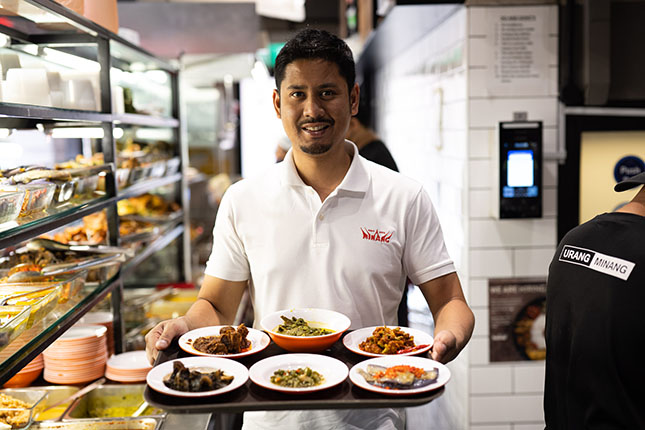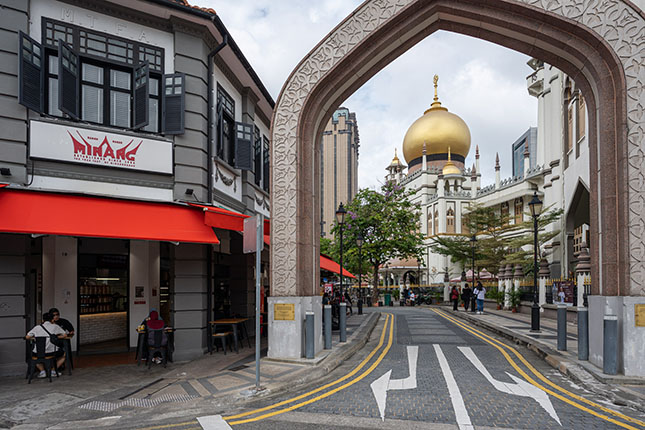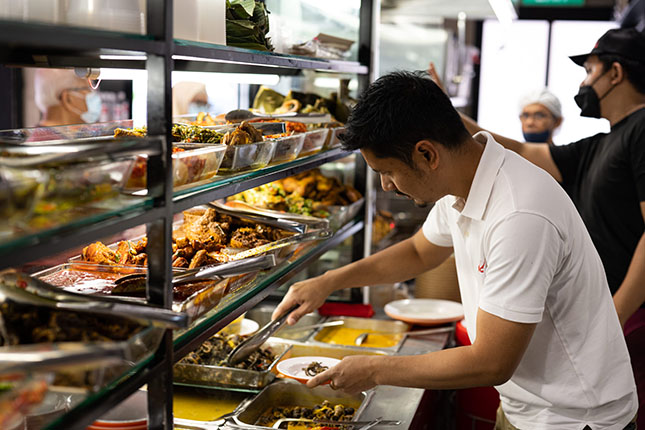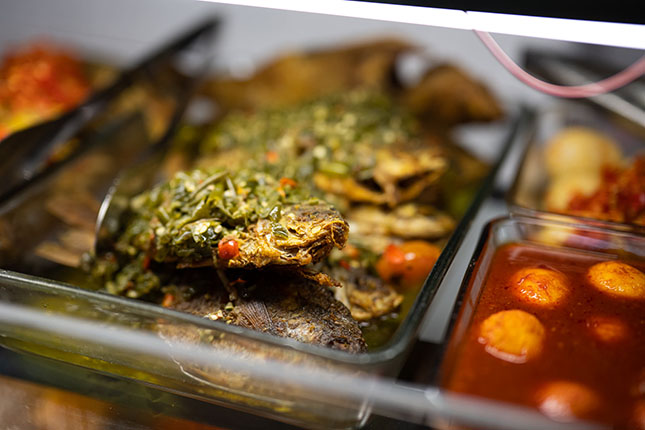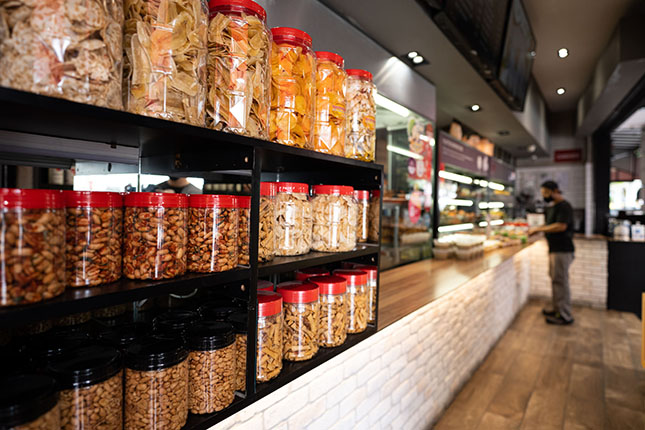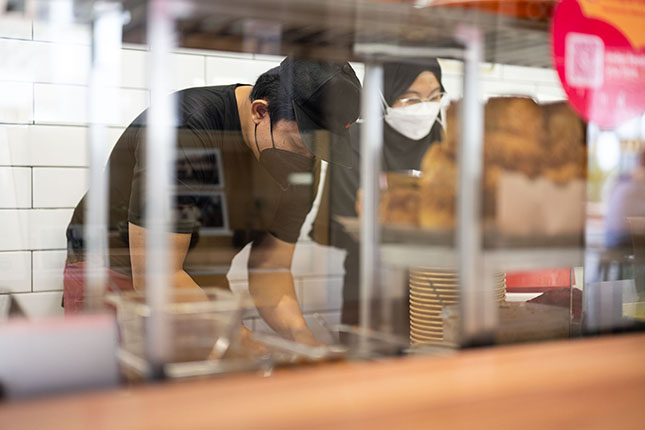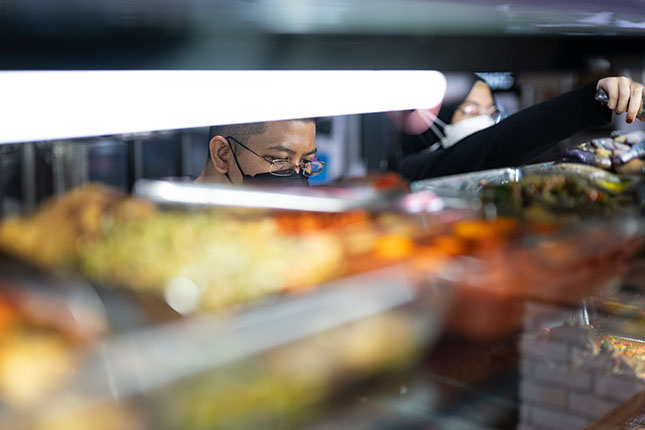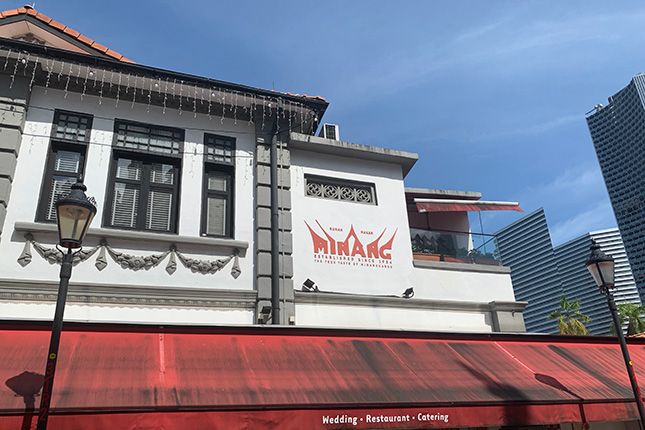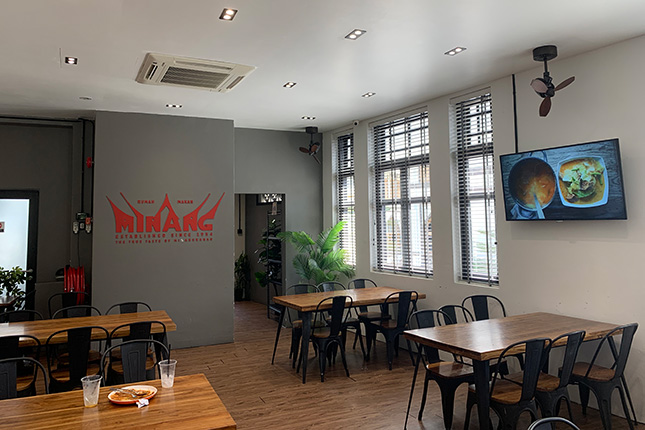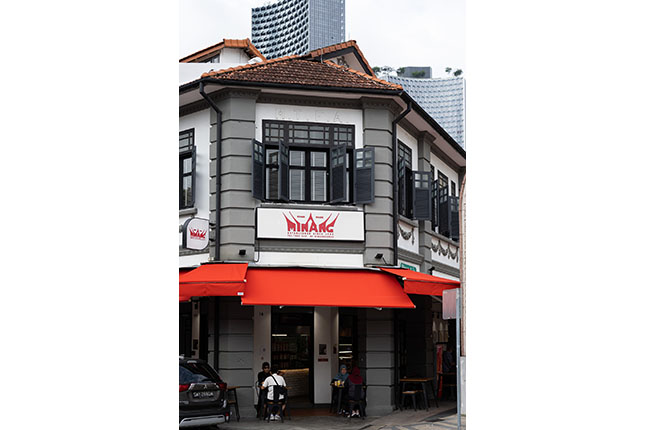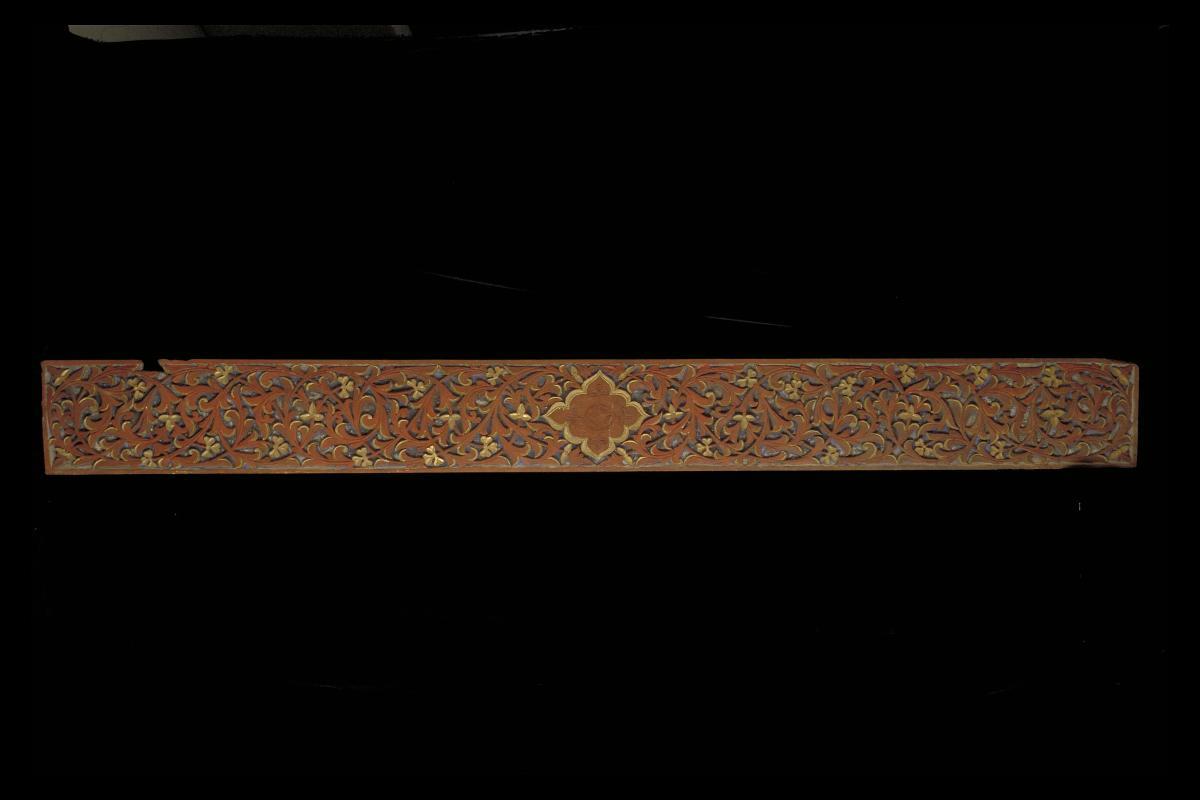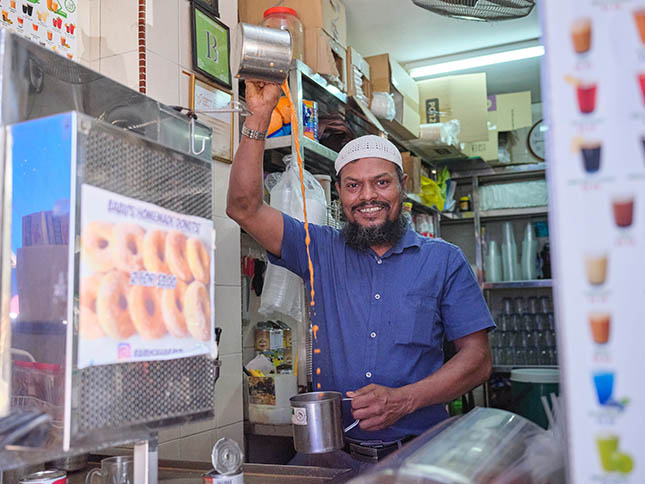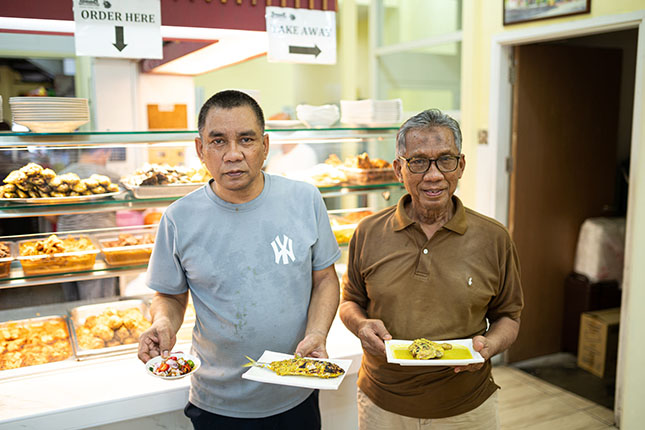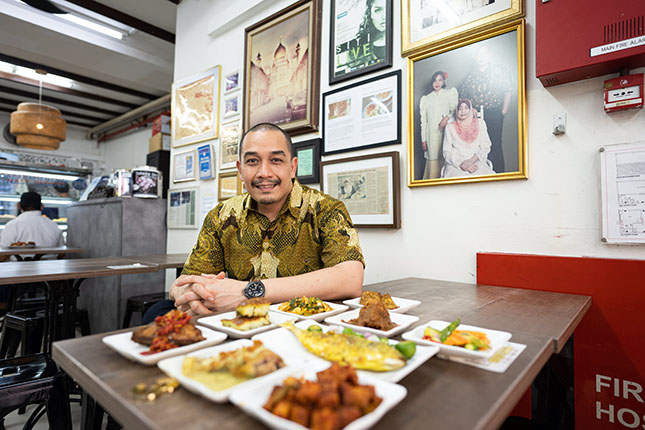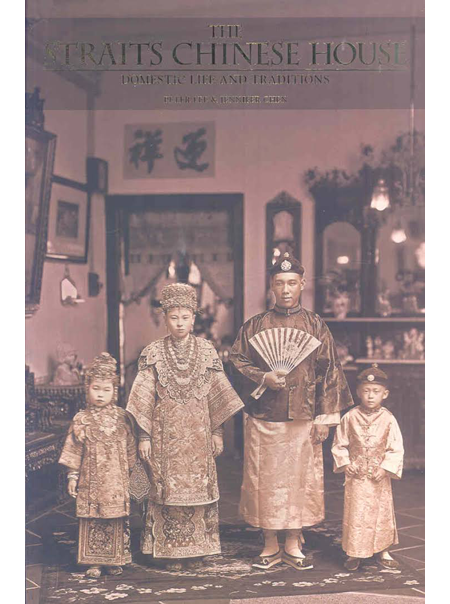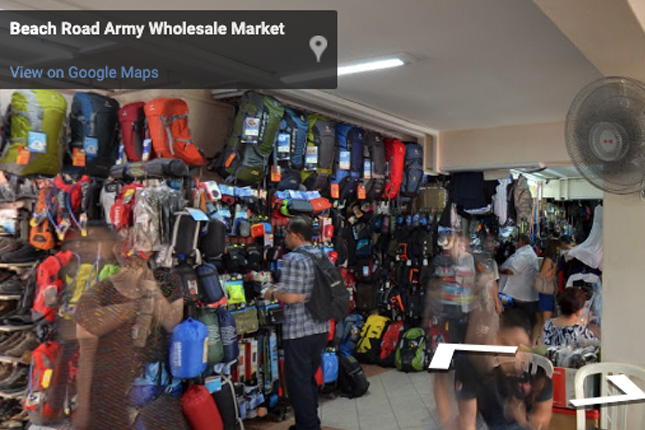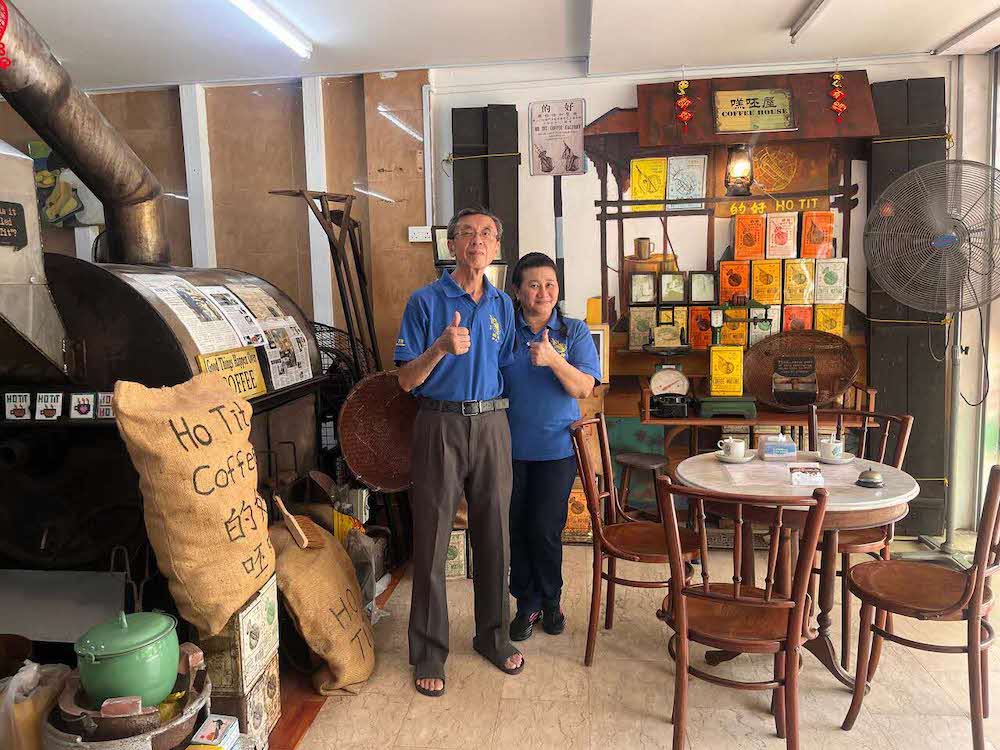Come Makan in my Rumah
|
Name of business: |
Rumah Makan Minang |
|
Business Location: |
18 Kandahar Street, Singapore 198884 |
|
Business type: |
Food & Beverage |
|
Established: |
1954 |
Mr Hazmi Zin remembers how the family business started out with his grandmother serving Minangkabau dishes to diners in the shophouse they lived in. Today, Rumah Makan Minang has persevered through many challenges over the years and emerged as a brand that the family is proud of.
Having grown up in Kampong Gelam in the 1980s, Hazmi has many memories of his childhood to share. “At that time, you can see all the Arab traders coming in, Indonesian traders as well, they would come to my grandma’s place for food,” Hazmi says, recounting how his grandma would cook Minangkabau cuisine for diners in her own home. “In the afternoon while we’re watching TV, they knock on our doors, walk through our living room and all the way behind to the kitchen. Inside my grandma’s kitchen, there’s a long table like this, with a bench. This means that if a ship arrives, the whole kitchen is filled and there are people waiting outside to get seated. It's like an open house.” You could say that Rumah Makan Minang was a true pioneer in private dining, a popular concept these days whereby a small group of diners pay to eat in the home of the chef.
Hazmi’s mother, Zulbaidah is the youngest child and she stayed with her mother Hajjah Rosemah, together with her husband, Zin Harun and little Hazmi. Pointing to an old photo on the wall, Hazmi says, “It’s the shophouse in the second picture, we rented a room there, it’s very small, like three of this table.” The family stayed there until they saved enough money to start the eatery. “Last time, it was called Sabar Menanti. The full name was Rumah Makan Minang Sabar Menanti Siang dan Malam, when my mum started her business, it became Rumah Makan Minang.”
As a kid, Hazmi was known as the rascal of the kampong. Everybody knew him. “If people say “Minang son”, they know it’s me. I played with the boys around my age, some lived in the Istana (Kampong Gelam). We used to play around the back of Haji Lane, where there were a lot of spiral staircases back then. And there was a big long kang (monsoon drain) where we played with folded paper boats,” The memories are still vivid in his mind today, “I’ve seen how Arab Street transformed. It used to have quarters with people, like a Polly Pocket housing.” And sometimes when their parents allowed, the kids would venture to Blanco Court (the site of present-day Raffles Hospital). “Because the second floor of Blanco Court sells all the toys and below, they sell all the dried goods like sotong (squid) and herbs, it was very smelly.”
Since the early 19th century, diverse communities such as Minang, Javanese, and Boyanese families have made their homes in Kampong Gelam. Some are still operating businesses today. “It’s really an honour to be born and raised in Arab Street. The heritage is being preserved and the bond that we have here is very, very strong. During Raya, we will go door to door and visit each other,” Hazmi says. Due to the different cuisines that different ethnic groups prefer, Hazmi’s grandmother had tweaked the recipes over the years to cater to Singaporean tastebuds. When she first started, she cooked her Asam Pedas in the pure Padang way—with strong Minangkabau influence—which is very spicy and sour. But to cater to the varied tastes, she had sweetened it. “Last time, for Gulai Ayam, we tied the neck and feet of the chicken with raffia and cooled them together. We never thought of whether it was bad for our health and all that, people just enjoyed the food without much care. Last time, the food was shiok, now you cannot get this kind of food already.” On the other hand, he ensures that some dishes, like the Rendang, are still cooked in the original Minangkabau way.
In Kampong Gelam, there are three popular Nasi Padang stalls—Sabar Menanti, Rumah Makan Minang, and Pariaman. These eateries went through some challenging times during SARS in 2003 and history repeated itself in 2020 when the COVID-19 pandemic hit Singapore. The silver lining amidst these difficult periods was that an awareness to “support local” was present. Till today, Hazmi feels very grateful for the support that he received from Singaporeans, as well as the support from the government, which helped them to tide through the pandemic. Even the mosque chipped in to help in the COVID-19 period, using their charity money to hire the restaurant’s chef during Ramadan to cook for the poor. Grateful for the help he received, Hazmi gave back by donating food to the frontline workers. Not forgetting his own employees, Hazmi also made it a point to retain them despite the tough times. “During the good times, they help us. So, during the bad times, we will be with them. That’s the way we should run a business,” he says.
Rumah Makan Minang has persevered through the challenges and emerged with a brand that the family is proud of. To uphold the family legacy, Hazmi collaborates with other restaurants such as Shangri-La Hotel’s The Line Restaurant to supply Rendang and Balado. Hazmi is glad that he can serve his signature dishes to hotel guests as it helps keep the Minang cuisine alive. He says, “I want to be remembered for my food and heritage—the origins of my family, and how my mum and dad sacrificed so much for us in order to create this Minang brand. The journey that we went through to bring up the branding was not easy, so I always tell my staff to take care of the name and treat our customers well.”
Interviewed by Fuad Johari and Clasfe Chua on 17 May 2022.




